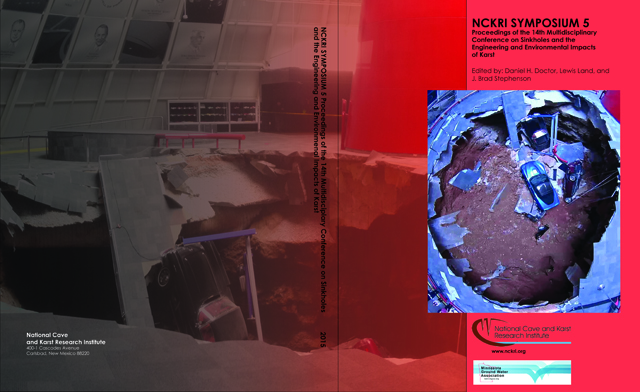Abstract
Following flooding in September 2013, several areas in northern Eddy County, New Mexico were damaged by multiple sinkhole collapses. We conducted rollalong electrical resistivity (ER) surveys for subsurface cavities parallel to roads within and near the community of Lakewood, NM to guide road repairs. The rollalong method allowed us to generate exceptionally long, continuous ER profiles of the survey area. ER surveys attained a maximum exploration depth of 55 to 62 meters over a lateral extent of ~1000 meters, revealing an unconformable surface developed on gypsum bedrock, punctuated by shallow depressions. Subsurface stratigraphy, including clay-rich valley fill sediments, and mudstone and gypsum of the underlying Seven Rivers Formation, can be identified by vertical and lateral variations in electrical resistivity. The irregular bedrock surface of the Seven Rivers Formation reflects paleotopography developed on that surface prior to its burial by floodplain sediment. Some of the negative paleotopographic features are probably filled sinkholes, which may be associated with shallower karstic features not imaged on the profiles.
Rights Information
DOI
http://dx.doi.org/10.5038/9780991000951.1006
Included in
Rollalong Resistivity Surveys Reveal Karstic Paleotopography Developed on Near-Surface Gypsum Bedrock: Lower Pecos Valley, Southeastern New Mexico
Following flooding in September 2013, several areas in northern Eddy County, New Mexico were damaged by multiple sinkhole collapses. We conducted rollalong electrical resistivity (ER) surveys for subsurface cavities parallel to roads within and near the community of Lakewood, NM to guide road repairs. The rollalong method allowed us to generate exceptionally long, continuous ER profiles of the survey area. ER surveys attained a maximum exploration depth of 55 to 62 meters over a lateral extent of ~1000 meters, revealing an unconformable surface developed on gypsum bedrock, punctuated by shallow depressions. Subsurface stratigraphy, including clay-rich valley fill sediments, and mudstone and gypsum of the underlying Seven Rivers Formation, can be identified by vertical and lateral variations in electrical resistivity. The irregular bedrock surface of the Seven Rivers Formation reflects paleotopography developed on that surface prior to its burial by floodplain sediment. Some of the negative paleotopographic features are probably filled sinkholes, which may be associated with shallower karstic features not imaged on the profiles.

